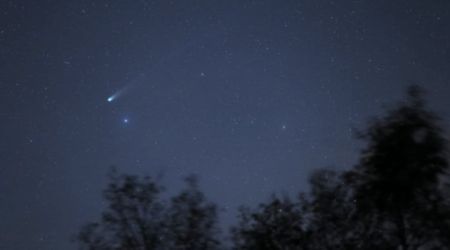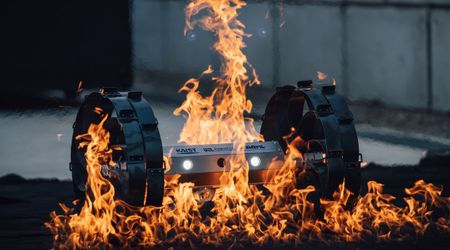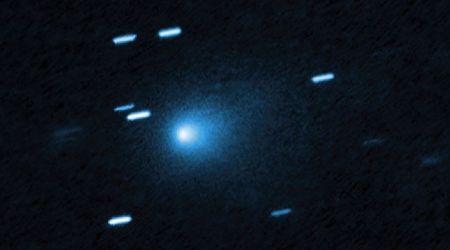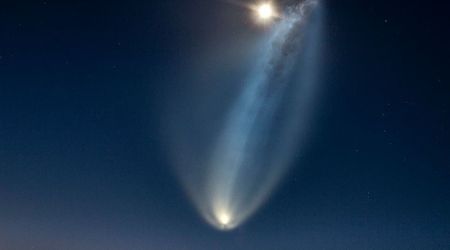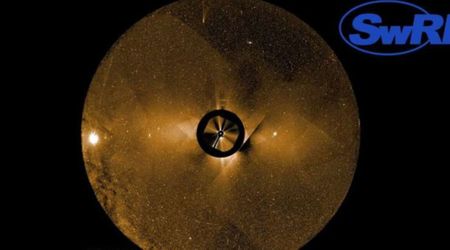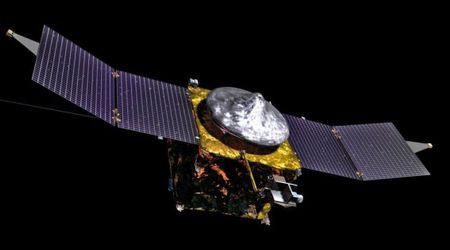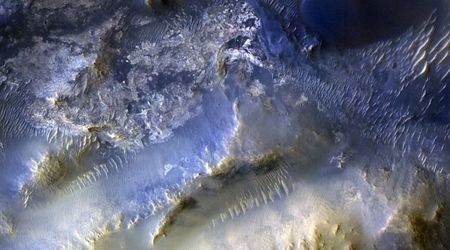Subaru Telescope discovers ancient ‘fossil’ object beyond Pluto, challenges the existence of Planet Nine

Astronomers utilizing the Subaru Telescope have announced the discovery of a new celestial body, provisionally named 2023 KQ14 and dubbed "Ammonite" by its discoverers. This marks the fourth identified member of the enigmatic sednoids, a class of minor icy objects distinguished by their unusually elongated orbits at the far reaches of our solar system, as per the Subaru Telescope.
The #SubaruTelescope revealed a fourth member of the sednoids, a group of small bodies with peculiar orbits around the outer edge of the Solar System. The new object, officially designated 2023 KQ14, has been nicknamed "Ammonite" by the research team. https://t.co/0XmfwRA6k7 pic.twitter.com/68FymIbR4J
— Subaru Telescope Eng (@SubaruTel_Eng) July 15, 2025
Researchers believe Ammonite could offer unprecedented insights into the early formation of the Solar System and potentially provide crucial clues in the ongoing search for the elusive Planet Nine. The discovery emerged from the FOSSIL (Formation of the Outer Solar System: An Ice Legacy) survey, an international initiative launched in 2020 by scientists primarily from Japan and Taiwan. Employing the Subaru Telescope's advanced Hyper Suprime-Cam (HSC), FOSSIL aims to identify distant, icy objects that serve as "fossils" preserving the conditions of the Solar System's infancy.
New Release: Subaru Telescope Discovers “Fossil” in Outer Solar System
— NAOJ (@prcnaoj_en) July 15, 2025
Subaru Telescope has made an exciting discovery: a small body beyond Pluto, with implications for the formation, evolution, and current structure of the outer Solar System.https://t.co/kQBnkBEPax
Dr. Fumi Yoshida of the University of Occupational and Environmental Health and the Chiba Institute of Technology, who spearheads the FOSSIL project, emphasized the significance of wide-field observations. "In recent years, spacecraft have been sent to various small bodies in the Solar System for close observation and sample collection. However, these spacecraft have only explored limited regions of the Solar System. Most of the vast Solar System remains unexplored," stated Dr. Yoshida.

Ammonite was first detected in observations conducted during March, May, and August of 2023. Subsequent follow-up observations in July 2024 with the Canada-France-Hawaii Telescope (CFHT) refined its orbital parameters. Further analysis of historical data archives revealed Ammonite in images dating back to 2021 and 2014 from the Drak Energy Camera (DECam) on the Blanco 4-meter telescope, as well as in 2005 images from the Kitt Peak National Observatory. This extensive 19-year observational record has significantly enhanced the precision of Ammonite's orbital determination.

Numerical simulations of Ammonite's orbital evolution, performed using resources from the National Astronomical Observatory of Japan, indicate remarkable orbital stability for at least 4.5 billion years. Intriguingly, while Ammonite's current orbit deviates from the other known sednoids, simulations suggest a striking similarity in their orbits approximately 4.2 billion years ago. This orbital divergence suggests a more intricate and diverse outer Solar System than previously theorized. It also introduces new constraints on the hypothetical Planet Nine. The FOSSIL team's simulations imply that if Planet Nine exists, its orbit would need to be even more distant than current predictions. Moreover, its presence would need to account for Ammonite's non-alignment with the other sednoids, as mentioned on the Subaru Telescope.

Dr. Yukun Huang of the National Astronomical Observatory of Japan, who led orbital simulations, commented, "The fact that Ammonite’s current orbit does not align with those of the other three sednoids lowers the likelihood of the Planet Nine hypothesis. It is possible that a planet once existed in the Solar System but was later ejected, causing the unusual orbits we see today."
Dr. Yoshida highlighted the profound implications of this discovery. "Ammonite was found in a region far away where Neptune's gravity has little influence. The presence of objects with elongated orbits and large perihelion distances in this area implies that something extraordinary occurred during the ancient era when Ammonites formed. Understanding the orbital evolution and physical properties of these unique, distant objects is crucial for comprehending the full history of the Solar System. At present, the Subaru Telescope is among the few telescopes on Earth capable of making such discoveries. I would be happy if the FOSSIL team could make many more discoveries like this one and help draw a complete picture of the history of the Solar System."
